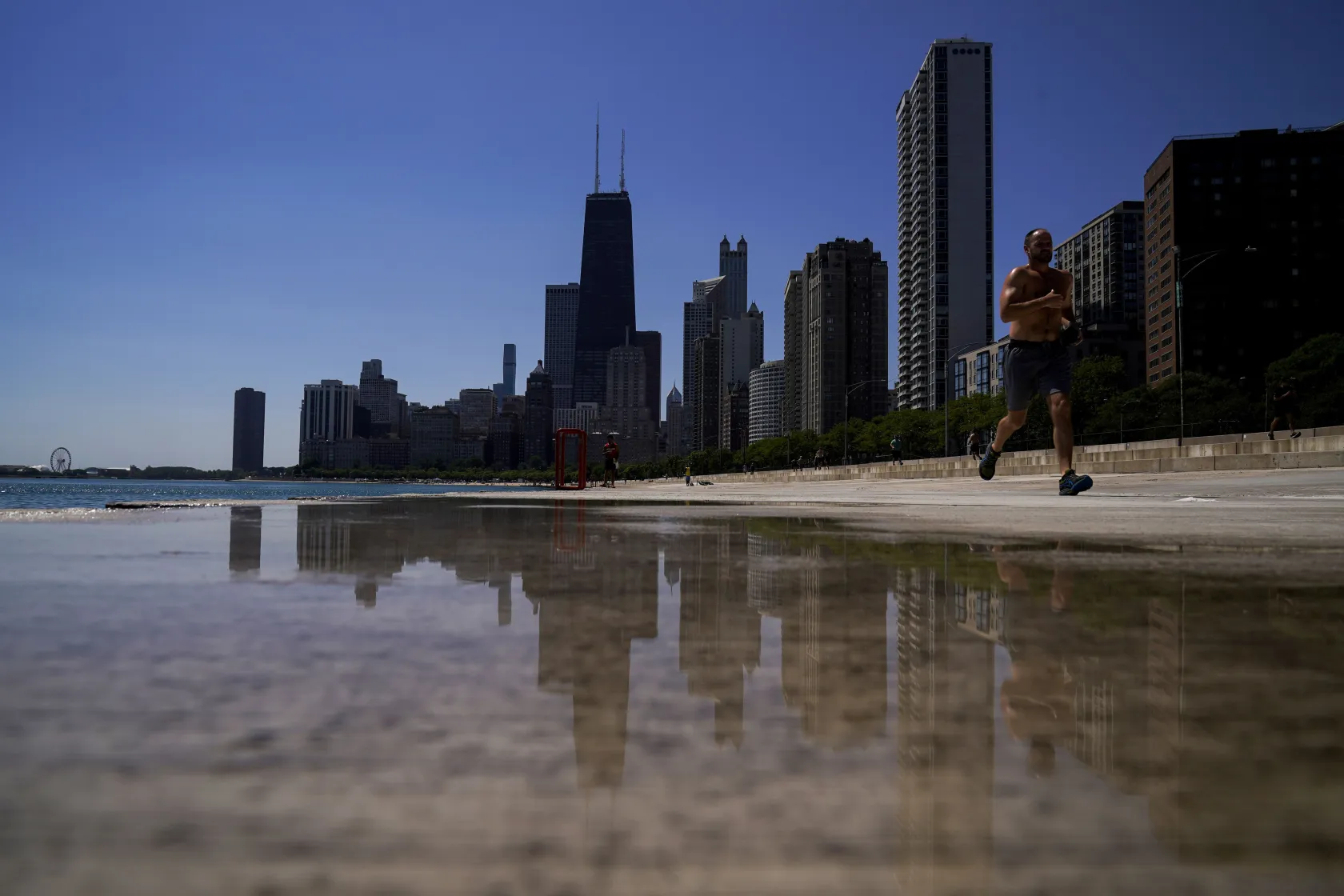Opinion: We Must Protect Great Lakes Shorelines at a Time of Extreme Lake Levels

Climate change is causing unexpected weather events and fluctuating lake water levels. That results in lakefront erosion, beach loss, flood risks and damage to homes and businesses.
We love our lakes. The Great Lakes are where we live, work and play. They are a global ecological gem, a recreational joy, and support a $7 billion fishing industry. Our freshwater largesse provides plentiful, safe drinking water while other regions suffer droughts.
More extreme Lake Michigan water levels, however, are disruptive and getting scary.
The Chicago region’s shoreline communities have been pummeled by intense storm winds and high waves. The National Oceanic and Atmospheric Administration and leading scientists from universities in the Midwest say it’s the wave of the future.
Climate change is causing more extreme weather events and fluctuating lake water levels. That results in lakefront erosion, beach loss, flood risks and damage to homes and businesses.
Higher water levels in particular threaten industrial facilities with hazardous and toxic materials that were built long ago along the shoreline, when water levels were lower.
We need to rethink the Great Lakes shoreline’s built environment and resiliency. That’s the real-world challenge and necessity. The Environmental Law & Policy Center’s new report “Rising Waters: Climate Change Impacts and Toxic Risks to Lake Michigan’s Shoreline Communities” maps potential flooding hazards due to higher water levels and storms exacerbated by climate change.
On Waukegan’s lakefront, the report highlights a cluster of four Superfund sites, coal ash ponds containing hazardous materials, and an aerospace coatings plant. Nearby, on Zion’s lakefront, large concrete canisters hold highly radioactive spent nuclear fuel rods from Exelon’s closed nuclear power plant.
Going south, homes, beaches and parks along North Shore communities, and along Chicago’s North Side neighborhoods (Rogers Park, Edgewater and Uptown) and South Side neighborhoods (South Shore and Southeast Side) have been flooded, battered and eroded.
The Southeast Side shoreline has three at-risk industrial sites within two miles — the Army Corps’ dredge waste dump, a shipping yard and a closed metal shredding plant — containing toxic and hazardous materials.
University of Michigan Professor Drew Gronewold describes Lake Michigan water levels shifting from a record low monthly average of 576 feet (2013), to a record high of 582.2 feet (2020). The Great Lakes are projected to both rise and fall, fueled by an accelerating “tug of war” between multiple factors. Higher temperatures will increase evaporation, resulting in lower lake levels. Lower winter temperatures and broad ice cover, combined with more precipitation, though, will cause much higher Lake Michigan water levels, and that’s the overall trend line.
As Gronewold explains: “In terms of climate change, the long-term signal that’s very clear for us in the Great Lakes is wetter and warmer.” That requires fundamental policy shifts and significant public and private investment to protect environmental health and infrastructure. Industrial facility owners, policymakers, elected officials and community leaders must step up now, before it’s too late.
Some key actions:
1. Reassess infrastructure risks and vulnerabilities in light of rising Lake Michigan water levels. Too many toxic sites along the shoreline were built based on outdated water level estimates. They weren’t designed to withstand higher water levels and flooding. Given the predictions of more extreme lake levels, cleaning up toxic sites must be a priority. Communities should likewise assess the impact on drinking water intake pipes, marinas and wildlife when water levels are low. And let’s not make existing problems worse — for example, the Army Corps of Engineers is seeking approval to expand its toxic dredge waste dump on Chicago’s Southeast Side.
2. Update and redesign local land use planning and zoning standards for new development based on current water level projections rather than yesterday’s news. Most communities’ planning, zoning and development laws and practices are based on historic Lake Michigan levels. Forward-looking planning faces a changing reality.
3. Invest in nature-based solutions, green infrastructure and better water management to strengthen shoreline resilience, including restoring wetlands to store water and reduce some pressure by absorbing overflow from Lake Michigan, while also providing wildlife habitat.
Green infrastructure can allow water to directly enter the ground instead of overwhelming drainage systems, flooding streets and flowing into the lake. Policymakers should explore “all of the water management tools in the toolbox.”
4. Effectively deploy the once-in-a-generation inflow of federal resources, including the Great Lakes Restoration Initiative’s additional $1 billion and the Bipartisan Infrastructure Investment and Jobs Act, which boosts funding for wastewater and storm water controls, and invests in clean drinking water programs. Let’s seize this opportunity to leverage a big difference for better shoreline resilience for years to come.
Let’s act now to shape a more sustainable future along the Lake Michigan shoreline. We’re all in this together.
Howard A. Learner is executive director of the Environmental Law & Policy Center.
